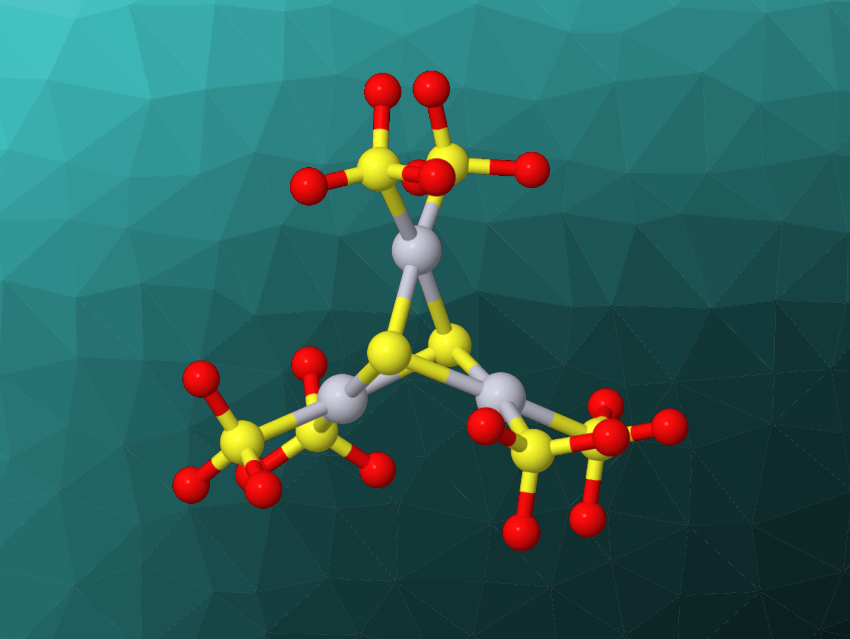Metal complexes that contain sulfur atoms can play important roles both in industrial catalysis and biological systems. For example, multinuclear metal complexes with bridging sulfido ligands of the type [Pt2(μ2-S)2L4] are promising precursors for some catalytic applications. The ligand L in these complexes is usually a phosphine derivative.
Ulrich Kortz Jacobs University, Bremen, Germany, and colleagues have synthesized the all-inorganic trinuclear Pt(II) complex [Pt3S2(SO3)6]10−, the first polythioplatinate(II) (pictured). The team synthesized the complex in the form Na10[Pt3S2(SO3)6]·22H2O from H2Pt(OH)6 and Na2S2O3 in an alkaline aqueous solution that was heated to 150 °C in an autoclave.
The team characterized the product using X-ray crystallography and found that the polythioplatinate anion comprises three Pt(II) ions linked by two μ3-sulfido ligands and capped by six sulfito ligands overall. Each platinum center has a square-planar coordination.
The researchers immobilized the complex on mesoporous silica (SBA-15) to investigate its catalytic activity. The resulting precatalyst showed excellent activity in the hydrogenation of o-xylene to give dimethylcyclohexanes, which was used as a model reaction. The team found that cis-1,2-dimethylcyclohexane was the major product at 150 °C, while trans-1,2-dimethylcyclohexane was the major product at 350 °C. The catalyst was recyclable and retained its activity for several runs of the reaction.
- Discovery of Polythioplatinate(II) [Pt3S2(SO3)6]10– and Study of Its Solution and Catalytic Properties,
Ananthu Rajan, Mahmoud Elcheikh Mahmoud, Fei Wang, Saurav Bhattacharya, Ali S. Mougharbel, Xiang Ma, Anja B. Müller, Talha Nisar, Dereje H. Taffa, Josep M. Poblet, Nikolai Kuhnert, Veit Wagner, Michael Wark, Ulrich Kortz,
Inorg. Chem. 2022.
https://doi.org/10.1021/acs.inorgchem.2c00777


